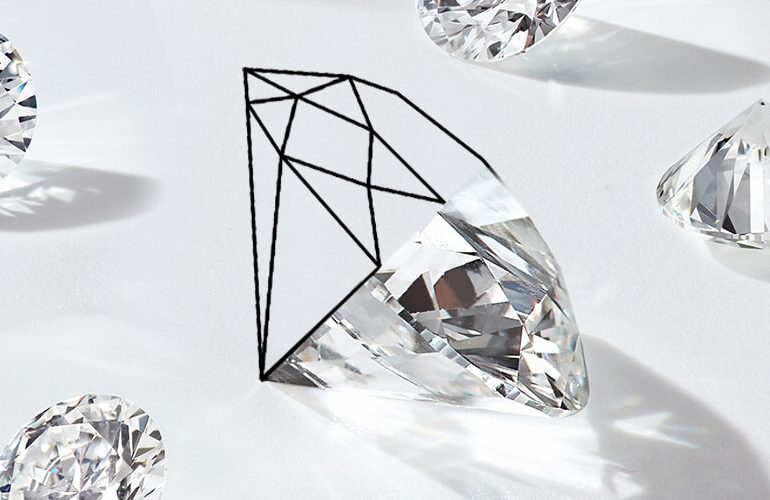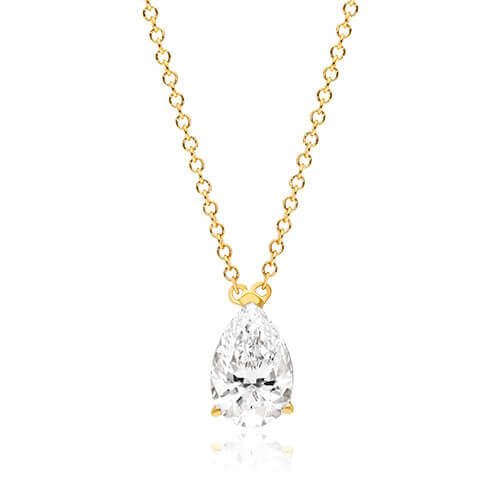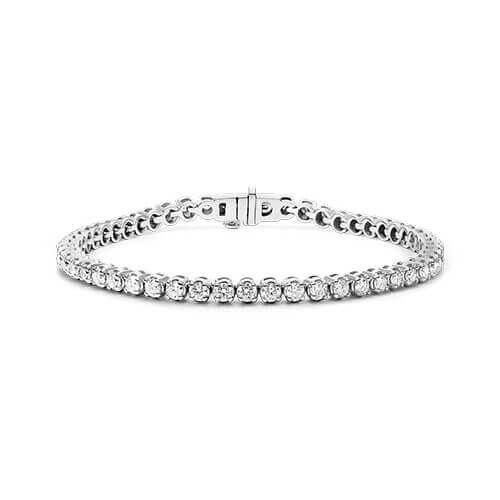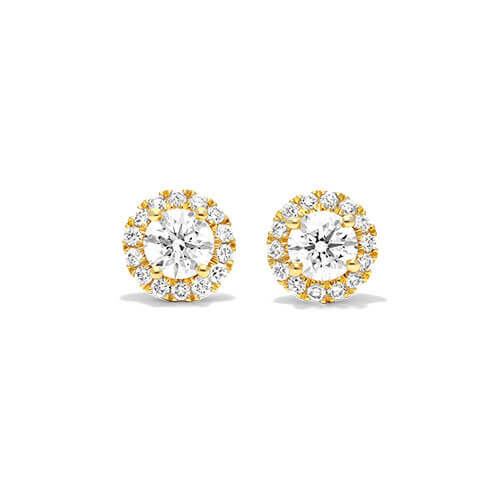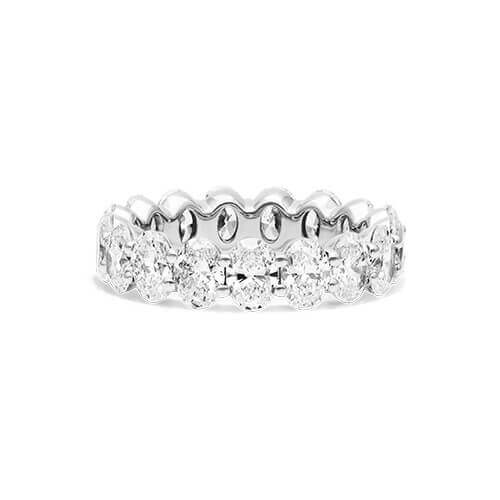Want to know more about the world’s most popular diamond shape? We’re exploring the diamond anatomy of a round diamond and how to pick the perfect one for your engagement ring or jewelry.
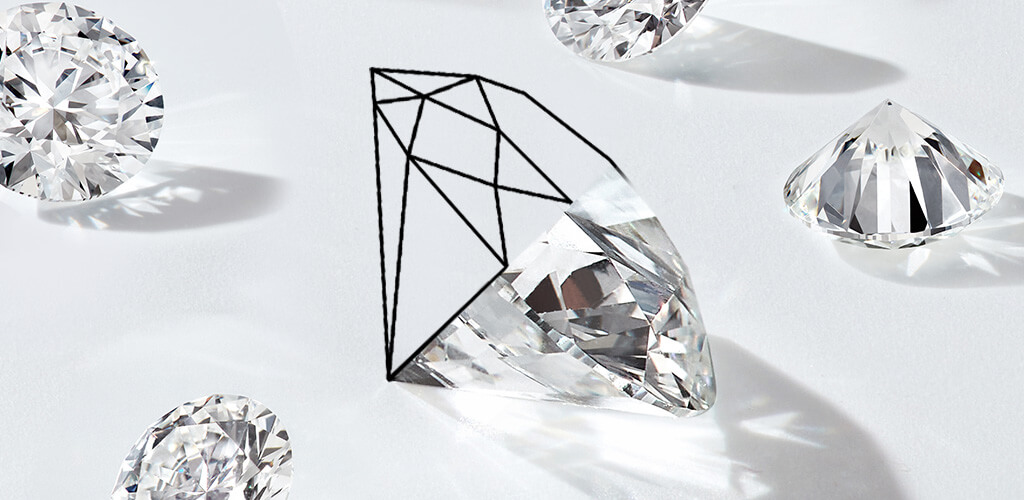
Table of Contents
What Is A Round Cut Diamond?
A round diamond is one of the most popular and timeless choices for engagement rings and other fine jewelry. Renowned for its classic shape and brilliant sparkle, the round cut diamond is characterized by its circular outline and 58 meticulously angled facets.
This particular cut is designed to maximize the diamond’s brilliance and fire, making it a favorite among those seeking a sophisticated and elegant look.
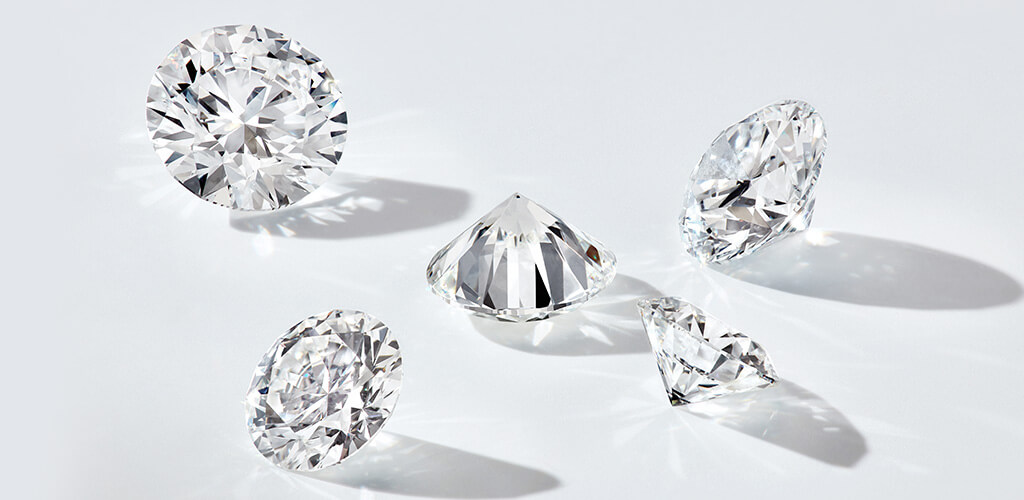
A Brief History Of The Round Diamond
The round cut diamond has a rich history that dates back centuries. While diamonds have been admired and treasured for millennia, it wasn’t until the 17th century that the concept of diamond cutting began to evolve. Early diamond cuts were primarily focused on preserving the stone’s natural shape, resulting in rough and uneven facets.
It wasn’t until the 20th century that Marcel Tolkowsky, a Belgian mathematician, revolutionized diamond cutting with his groundbreaking thesis on the ideal proportions for maximizing brilliance in round cut diamonds. Tolkowsky’s research laid the foundation for modern diamond cutting techniques, shaping the way we perceive and appreciate the beauty of round diamonds today.
Diamond Anatomy
Understanding the anatomy of a diamond is essential for appreciating its beauty and evaluating its quality. A diamond consists of several key components, each playing a crucial role in its overall appearance and brilliance.
Table: The table is the flat, topmost surface of the diamond. It acts as a window through which light enters and reflects off the diamond’s facets.
Crown: The crown is the upper portion of the diamond, extending from the table to the girdle. It comprises a series of facets that help refract and disperse light, contributing to the diamond’s sparkle.
Girdle: The girdle is the widest part of the diamond, separating the crown from the pavilion. It serves as the diamond’s perimeter and provides structural support.
Pavilion: The pavilion is the lower portion of the diamond, extending from the girdle to the culet. It contains additional facets that reflect light internally and enhance the diamond’s brilliance.
Culet: The culet is the small facet at the bottom tip of the diamond. Its presence prevents chipping and adds stability to the diamond’s structure.
Facets: Facets are the flat, polished surfaces of the diamond that interact with light to create brilliance and fire. Round diamonds typically feature 58 facets arranged in a precise pattern to maximize light performance.
Symmetry: Symmetry refers to the precise alignment of a diamond’s facets and proportions. Diamonds with excellent symmetry exhibit optimal light reflection and visual appeal.
Depth: Depth refers to the distance from the table to the culet. It plays a critical role in determining the diamond’s brilliance and overall appearance.
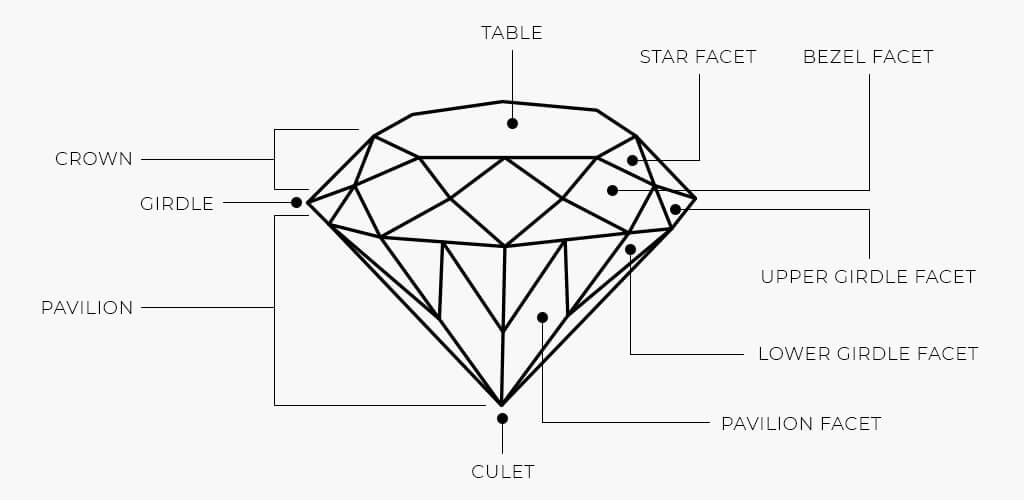
Diamond Cut Vs. Diamond Shape
Diamond Cut
The cut of a diamond refers to its proportions, symmetry, and polish.
It directly influences the diamond’s brilliance, fire, and overall visual appeal.
A well-cut diamond reflects light internally and disperses it through the crown, creating a dazzling sparkle.
Diamond Shape
The shape of a diamond refers to its outline when viewed from above.
While round is the most popular shape, diamonds can also be cut into various other shapes such as princess, emerald, and oval.
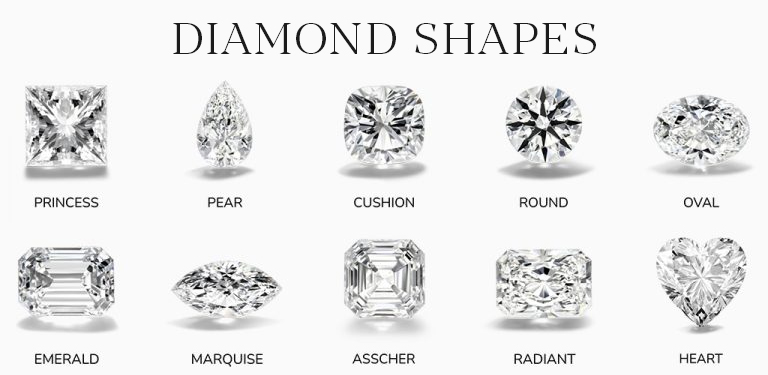
What Is A Brilliant Cut?
The term “brilliant cut” refers to a specific type of faceting pattern used in round diamonds. It is designed to maximize the diamond’s brilliance by allowing light to enter through the table and reflect off the facets, creating a stunning display of sparkle and fire. The brilliant cut typically features 58 facets arranged in a precise pattern to optimize light performance, making it the preferred choice for round diamonds.
Round Diamond Buying Tips
When purchasing a round diamond, it’s essential to consider the four Cs: cut, color, clarity, and carat weight.
Cut
Opt for a diamond with an excellent or ideal cut grade to ensure maximum brilliance and sparkle.
Avoid diamonds with poor cut grades, as they may lack fire and brilliance.
Color
Choose a diamond with a color grade of G or higher for a colorless appearance.
Consider lower color grades for budget-conscious buyers, as slight color differences may be less noticeable in smaller diamonds.
Clarity
Look for diamonds with minimal inclusions and blemishes, preferably with a clarity grade of VS2 or higher.
Consider eye-clean diamonds, where any imperfections are invisible to the naked eye.
Related Post: What Is A VVS Diamond? A Comprehensive Guide
Carat Weight
Balance carat weight with cut quality to achieve the desired size without sacrificing brilliance. Keep in mind that smaller diamonds with excellent cut grades may appear larger and more brilliant than larger diamonds with inferior cuts.
Pros & Cons Of Buying Round Cut Diamonds
| Pros | Cons |
| Timeless and classic | Generally higher price per carat |
| Maximum brilliance and sparkle | May appear smaller than other shapes |
| Versatile and easy to pair | Vulnerable to chipping at the girdle |
| Widely available | More visible inclusions and imperfections |
FAQs
Are round diamonds popular?
Yes, round diamonds are incredibly popular due to their timeless appeal and maximum brilliance.
Do round cut diamonds have the best sparkle?
Round diamonds are renowned for their exceptional sparkle and fire, making them one of the most brilliant diamond shapes.
Are round cut diamonds more expensive?
Generally, round diamonds tend to be more expensive per carat compared to other shapes due to their popularity and demand.
Where is the best place to shop for a loose diamond?
The best place to shop for a loose diamond is from reputable and established jewelers or online retailers with certifications and transparent grading policies.
SHOP RELATED PRODUCTS
Jessica is a seasoned content writer with four years of experience and a qualified gemologist. She enjoys educating new shoppers on the best practices for buying jewelry.

